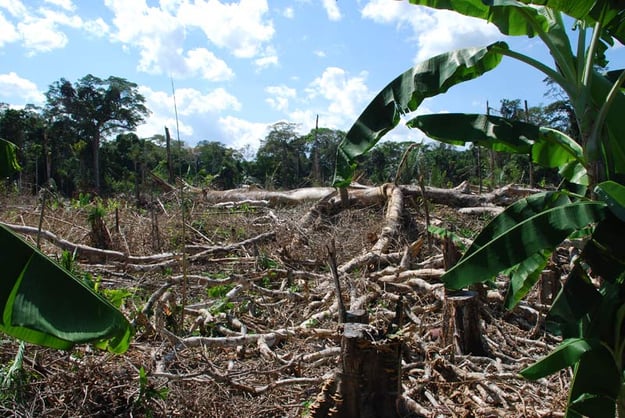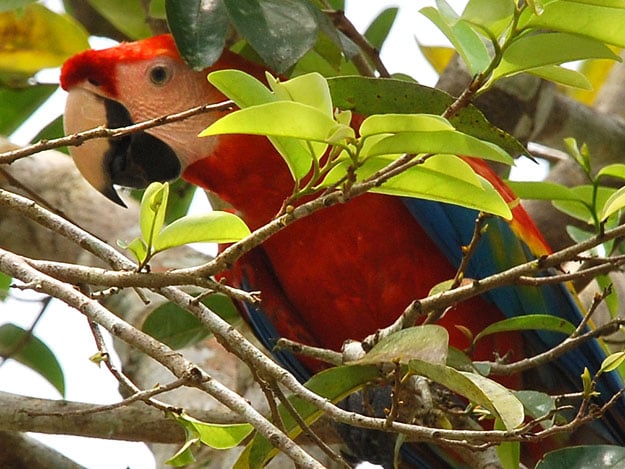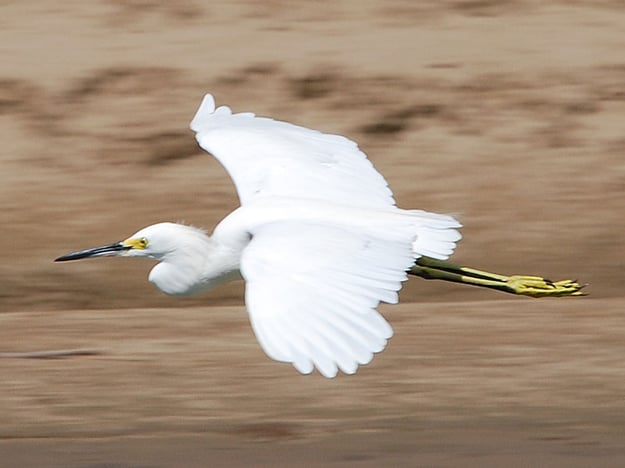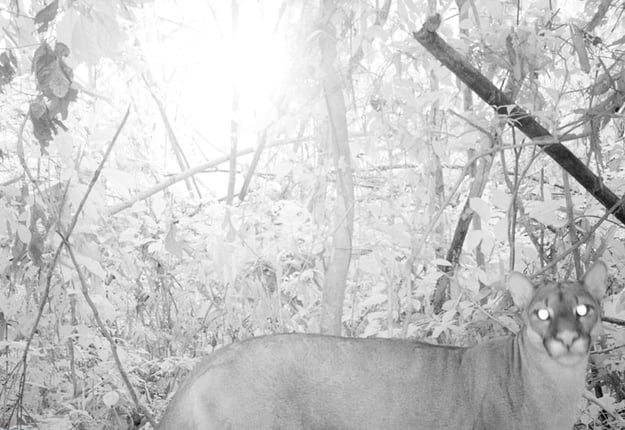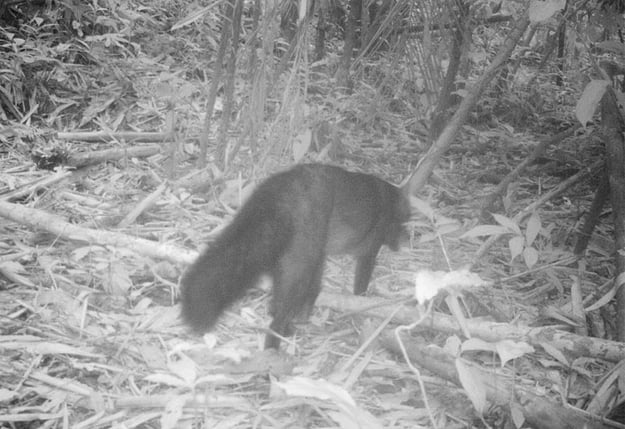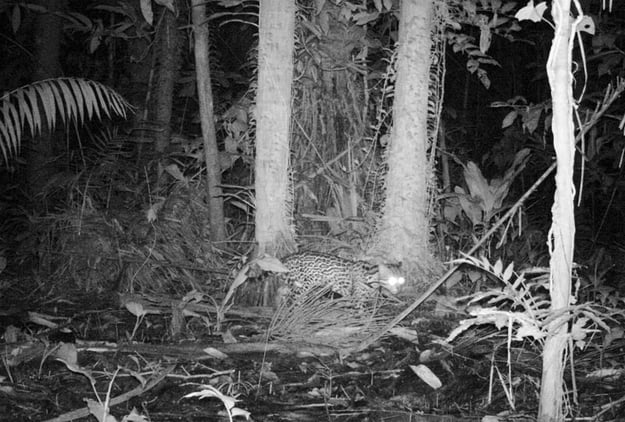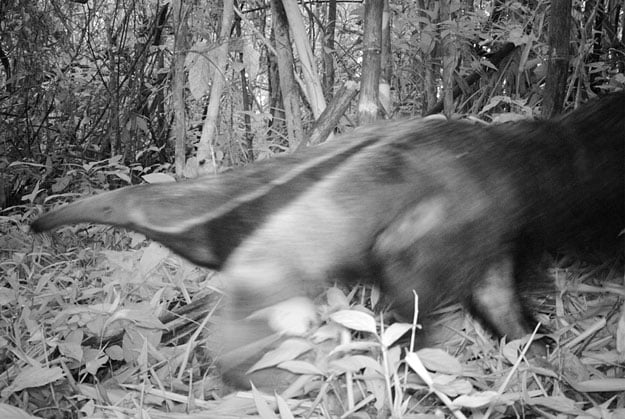We are so excited to have a guest post by Brian McFarland of Carbonfund.org featuring the Purus Project in the Amazon! Because we source our organic acai berry powder, catuaba bark, pau d’arco bark, and other products from Brazil, we understand its global ecological importance as a carbon sequestration area for the world.
Since 2011, Mountain Rose Herbs has worked with Carbonfund.org to offset our company-wide carbon dioxide emissions and help fight climate change. We wholeheartedly support their mission to reduce what you can, offset what you can’t! Every year, we calculate our carbon footprint by accounting for the electricity and heating fuels we use in production, and estimate the greenhouse gas emissions of our business travel. Find out more about what you can do to reduce and offset your carbon footprint as an individual or business!
Tropical deforestation is a global problem. It is responsible for approximately 15-20% of the human-caused greenhouse gas emissions, reduces habitat availability for a tremendous amount of biodiversity, and further threatens the livelihoods of forest-dependent communities. With this in mind, only 2% of the world’s total surface area is home to rainforests, yet these ecosystems are home to 50% of the world’s plants and animals. Shockingly, according to The Nature Conservancy, “every second, a slice of rainforest the size of a football field is mowed down. That's 86,400 football fields of rainforest per day, or over 31 million football fields of rainforest each year.”
Because of the support of our generous donors including Mountain Rose Herbs, the Carbonfund.org Foundation created its wholly-owned subsidiary, CarbonCo, to design, finance, implement, and manage large-scale forest conservation projects. Our projects help mitigate this trend of tropical deforestation while also preserving precious rainforest habitat and providing alternative economic opportunities for local communities. These projects, known as Reducing Emissions from Deforestation and Forest Degradation (REDD+) projects, are essentially payment for ecosystem service projects which rely on the sale of verified emission reductions (VERs), commonly known as carbon offset credits.
As of today, CarbonCo has several REDD+ projects in the Western State of Acre, Brazil which are protecting more than 700,000 acres. To help visualize how large these projects are, consider that 700,000 acres is the equivalent to approximately 1,100 square miles. This is almost as large as the entire state of Rhode Island (1,545 square miles), about the size of the urban area of Paris, France (1,098 square miles) and more than twice the size of New York City (470 square miles).
The Southwestern Amazon, specifically along the Purus River in the State of Acre, Brazil, is home to our Purus Project. This forest conservation project covers approximately 85,714 acres and achieved validation and verification to the Verified Carbon Standard (VCS) and to the Gold Level of the Climate, Community and Biodiversity Standard (CCBS) for the Project’s exception biodiversity benefits.
The Purus Project is located within one of the World Wildlife Fund’s ecoregions which represent “the most distinctive examples of biodiversity for a given major habitat type.” The Project achieved exceptional biodiversity benefits because during a rapid biodiversity assessment from August to September 2009, at least two endangered species according to the International Union for Conservation of Nature (IUCN) Red List were identified at the Purus Project. These endangered flora species are Car-cara (Aniba rosaeodora) and Baboonwood (Virola surinamensis).
Anecdotal observations of biodiversity on or next to the Purus Project include:
Scarlet Macaw (Ara macao)
Amazon River Dolphins (Inia geoffrensis)
Squirrel Monkey (Saimiri sciureus L.)
Great White Herons (Ardea alba)
One of the ways the Purus Project monitors biodiversity is by using motion-sensitive cameras to photograph medium-to-large mammals. The motion-sensitive cameras took pictures of a short-eared dog and a jaguar, both considered near threatened by the IUCN Red List. Also captured by the motion-sensitive cameras, are photos of a giant anteater and a lowland tapir, which are listed as vulnerable on the IUCN Red List. Other wildlife photographed include a puma, otherwise known as a mountain lion, along with an ocelot. Furthermore, the photograph of the short-eared dog is only the second photograph ever taken of a short-eared dog in the State of Acre!
Carbon offset credits at work!
About Brian McFarland
Brian McFarland is the Director of Carbon Projects and Origination for Carbonfund.org and CarbonCo.
At Carbonfund.org, Brian identifies climate change mitigation projects in the energy efficiency, renewable energy and forestry sectors, conducts due diligence on such projects, and then structures the financial support and manages the project portfolio. This project portfolio includes approximately 75 tree planting and carbon reduction projects across 30+ US states and 15+ countries. At CarbonCo, Brian identifies early stage forest conservation projects and then designs, finances, and implements the origination of REDD+ projects including co-authoring more than 1,000 pages of project documents.
Photos courtesy of Brian McFarland.

